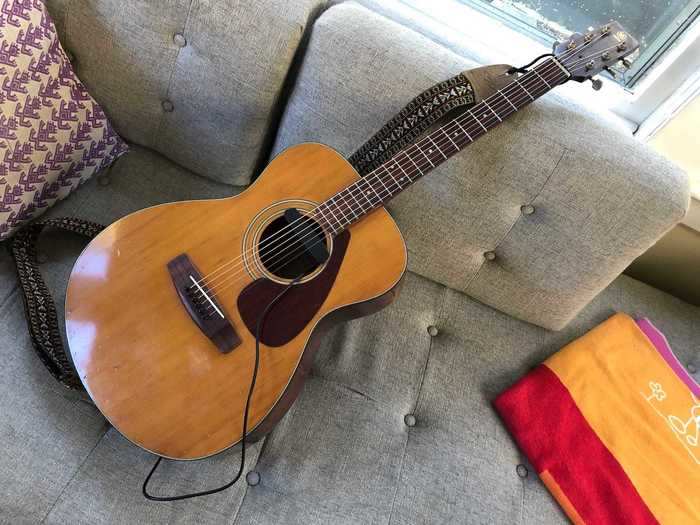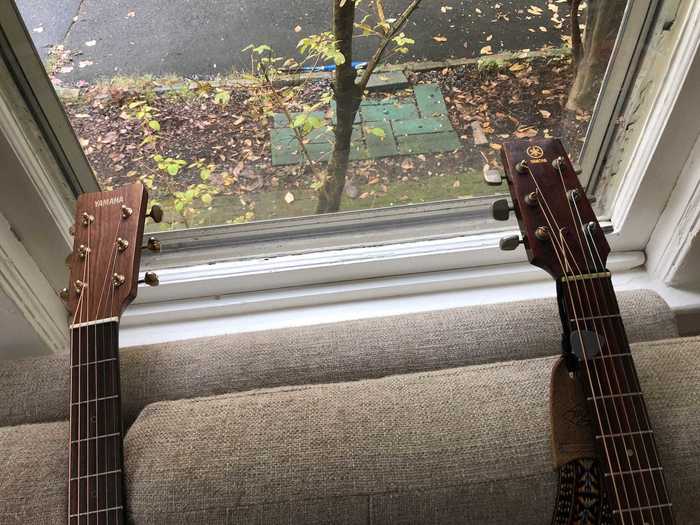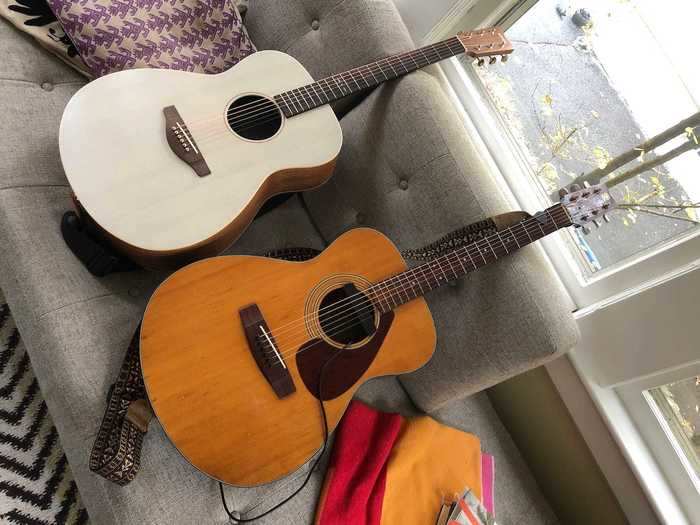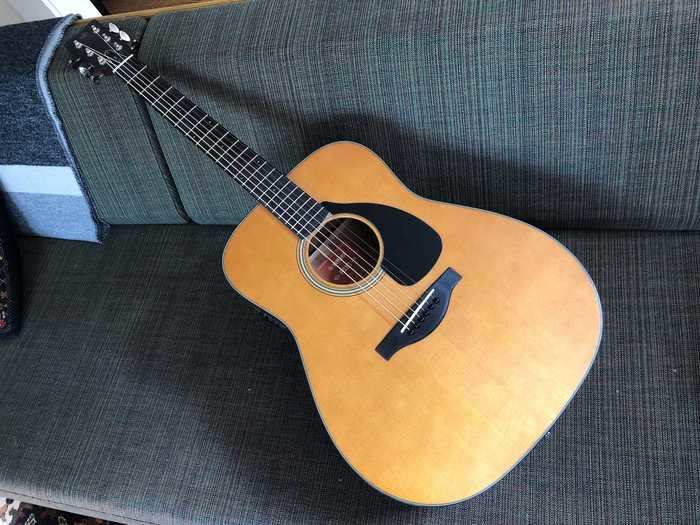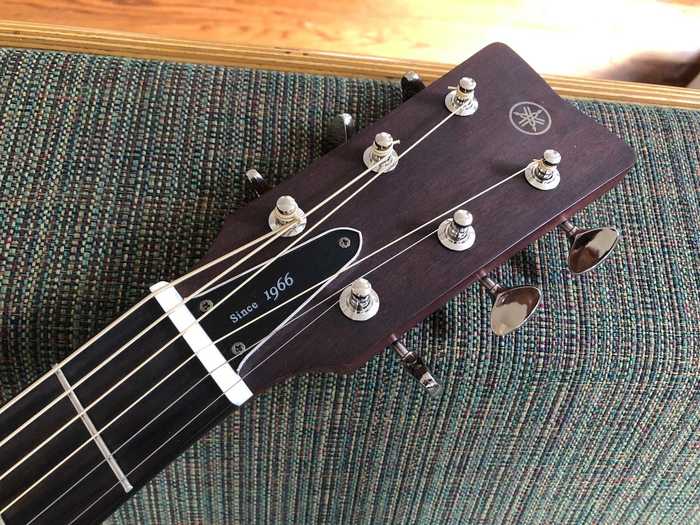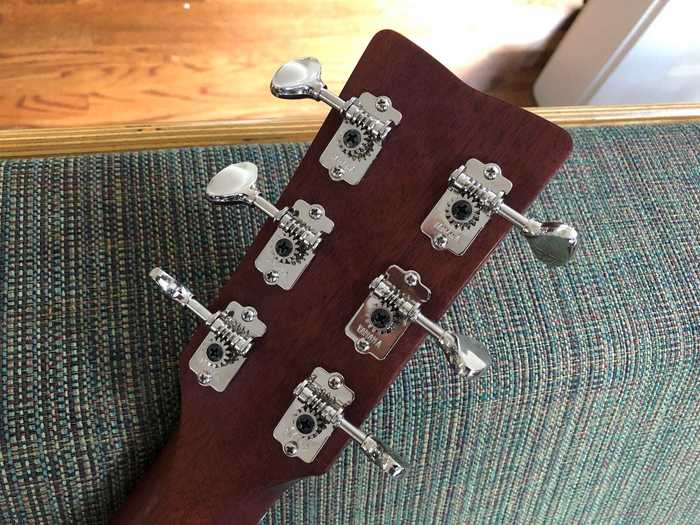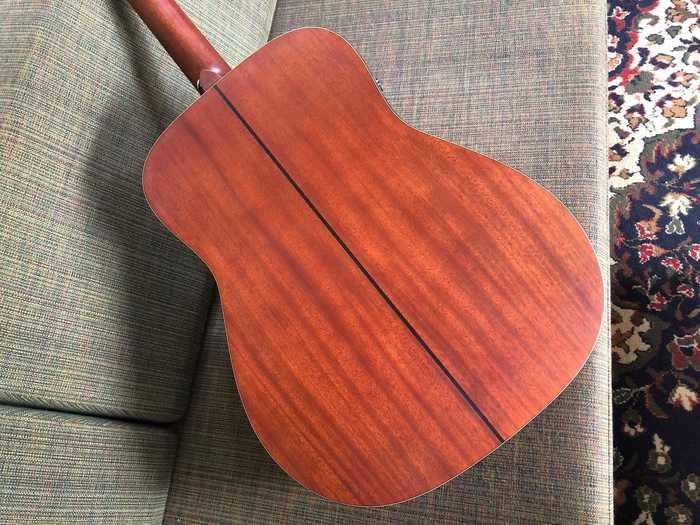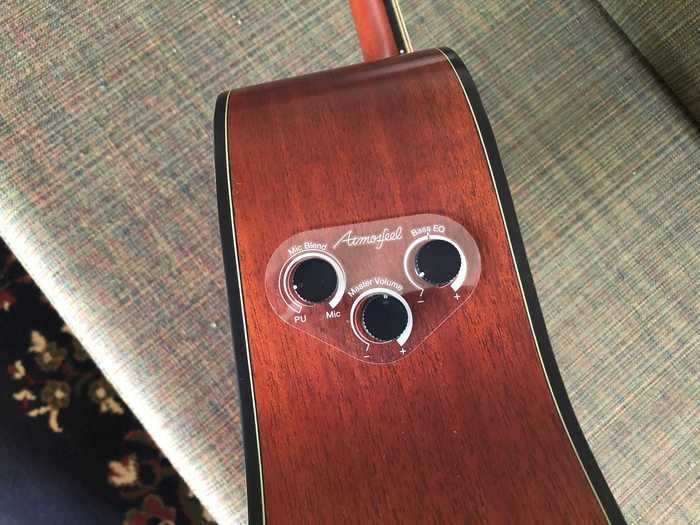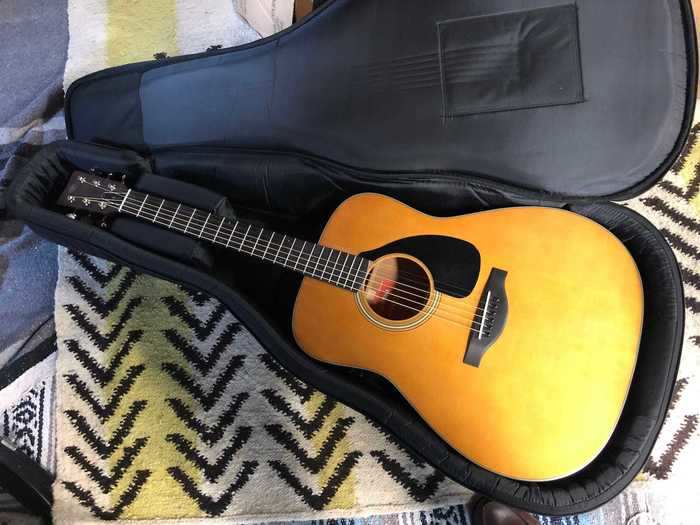Business Insider
- I tested out the all-new Storia I, a $700 "concert" size model; and the $1,600 FGX3, a jumbo/dreadnought that evokes Yamaha's legendary "red label" acoustics of the 1960s and '70s.
- Neither instrument is entry-level, but both are worth a look: the Storia for its easy-playing nature, and the FGX3 because it's professional-grade at a great price.
- Yamaha has always been know for tremendous value in acoustics, but both of these guitars take that reputation to a new level.
Baking, cooking, board games, puzzles — quarantined and locked-down folks have dealt with the coronavirus in a variety of ways, reviving old pastimes and exploring new ones.
Being stuck at home isn't necessarily fun, but it does present a classic scenario for learning to play a musical instrument. And perhaps the most popular, historically, is the acoustic guitar. You can do it all by yourself, there are superb online resources — Fender Play is one of the best — and the acoustic guitar can be played quietly enough to avoid annoying family members and roommates.
Of course, if you're gonna learn, you need a guitar. And when it comes to starting out, few manufacturers have a better reputation for "starter" acoustics than Yamaha. The company's FG300, at $200, has long been considered the best beginner dreadnought-size guitar on the market, and it was recently updated with the same-price FG800. For an acoustic with a solid-wood top, it's impossible to find a more appealing deal.
But the company makes many other instruments, and they let me borrow two of them to review: the all-new Storia I, a $700 "concert" size model; and the $1,600 FGX3, a jumbo/dreadnought that evokes Yamaha's legendary "red label" acoustics of the 1960s and '70s.
Here's what I thought of the these guitars:
I'm a Yamaha fan. My main guitar is a 1970s-era FG-170, a Taiwan-made acoustic.
Matthew DeBord/BI
The Yamaha Storia and my guitar are both smaller than the dreadnoughts that dominate the entry-level market. They're what are called "orchestra" or "concert" size, with more rounded shapes and shorter scale lengths.
Matthew DeBord/Insider
While my old Yamaha is made of plywood, the "Storia I has a solid Sitka spruce top with an off-white semi-gloss finish and ivory body binding," Yamaha says. "The mahogany back and sides have a natural finish, the inside is light blue and the rosette is inlaid with ivory and mahogany."
The model also has champagne tuners, which might not be for everybody.
Smaller guitars are great for starting out because they aren't as boomy as dreads — making for more subdued practice sessions — are more comfortable to sit with, play with a strap, and can help musicians to blend strumming, flatpicking, and finger-style.
Personally, I think they're the most versatile instruments around.
The specs really are quite similar, but my antique has a rosewood fretboard and a different headstock design.
Matthew DeBord/Insider
The Storia lineup offers three finishes. My Storia I was "off white" with a light-blue interior. The idea here is that the guitar blends in with your decor. If that sounds odd — well, you're more likely to play if the instrument isn't living in its case!
Yamaha
It's true that $700 is more in line with what you might pay for an intermediate acoustic-electric, and at that price point, the Storia has a lot of competition. Heck, Gibson just rolled out a basic version of its new G-45 guitar for about $1,000. For $700, you can get nice made-in-Mexico Martin, a nice made-in-Mexico Taylor, or a nice made-in-China Epiphone.
Where the Storia really shines is in build quality and playability. I really took to it. It's a good choice for a customer who desires a very dependable instrument that's well-designed and that won't get in the way of learning — and doesn't want to fuss over the offerings from the bigger names.
The Storia I is a step above beginner-grade, but it has so much going for it that it defies its own marketing.
Matthew DeBord/Insider
A lot of the guitar world would be skeptical of an instrument that's designed to match the room it lives in. And that would be justified skepticism if the Storia weren't such as fine guitar to actually play.
The "orchestra" or "concert" size is just about the perfect option for couch-playing. The reason my FG-170 is my No. 1 is that I play it constantly. It's also significantly more comfortable to strap on than a dread, and if I need to amplify it, I simply pop in a soundhole pickup and I'm good to go.
But it's old, so it has quirks. The Storia I, meanwhile, has no quirks. It's extremely easy to play, sounds fine unplugged, and offers some versatility with its simple, passive onboard pickup. (You have to adjust volume and tone with the amplifier or whatever interface you're laying through.)
And by "extremely easy to play," I mean stupid-easy. I've handled acoustics in the multiple thousands of dollars that weren't as slick.
On to the FGX3. This guitar is professional-grade. By reckoning, it's ever-so-slightly larger than the Martin dreadnoughts the old Red Labels were based on, placing it between a dread and a jumbo. Yamaha calls it an "FG" body.
Does the FGX3 sounds as good as it looks?
Matthew DeBord/Insider
The FGX3 is fantastically well made and almost completely devoid of bling. I searched and searched for a flaw. I found ... none.
Matthew DeBord/Insider
The top is Sitka spruce, and the back and sides are mahogany — a completely classic combination. The fretboard and the bridge are ebony. Yamaha has subjected the top to what it terms "Acoustic Resonance Enhancement," effectively baking the wood so that it dries out and can produce a sound that's as rich as an older guitar.
The main differences on paper between the $1,585 FGX3 and the$2,320 FGX5 is that the less-expensive axe is made in China and lacks a bone nut and saddle, as well as ebony bridge pins.
The aesthetic is pleasingly simple, with the natural satin finish, black pickguard, and modest dot inlays on the fretboard. For me, the FGX3 felt a bit large when I strapped it on, and it isn't a very lightly built guitar, but that suggests it could stand up to punishment, and important consideration for working musicians.
My test guitar came with Elixir Nanoweb Light Gauge 80/20 strings, which I thought were a touch too bright, but that's because I always use phosphor-bronze. I also don't care for the main selling point of Elixir Nanowebs, which is durability (they're also a coated string and theoretically easier to play, but I haven't found that to make a huge difference). I'd immediately put different string of this guitar, if I ended up buying it.
The headstock carries the Yamaha logo, and the truss-rod cover gets a "Since 1966" shout-out to the original Red Label, made-in-Japan guitars.
Matthew DeBord/Insider
The old Red Labels have a following. The late Elliot Smith, for example, was a devoted Red-Label player.
The tuners are open-back, vintage-style, but they're quite effective.
Matthew DeBord/Insider
Apart from the single black stripe, the back of the FGX3 is all about that gorgeous mahogany grain.
Matthew DeBord/Insider
Atmosfeel electronics are what give the FGX3 its "X" — a straight-up, FG3 version without a pickup and preamp is also available, at a lower price.
Matthew DeBord/Insider
The Atmosfeel system is excellent. It's not the best I've ever used, but it's no slouch and won't make any trouble for gigging artists who are looking for a good, amplified acoustic tone.
The setup is ... thorough. There's an undersaddle piezo pickup, a mic, and a sensor — and you have controls mounted on the guitar's side to tweak each of those. The result is an amplified sounds that's pretty sweet, but that can but adjusted depending on preference.
The FGX3 is a stunner. It even comes with a hard-sided gig bag that's probably more useful than a heavy case.
Matthew DeBord/Insider
The FGX3 is the best-sounding, best-playing, made-in-China acoustic I've ever laid my hands on. Admittedly, it isn't exactly cheap. But it's much more affordable than its made-in-Japan counterpart, the $2,300 FGX5.
The build-quality on the FGX5 is spectacular. The instrument is effectively flawless, and believe me, with its Red Label roots and design debt to the Martin D-18 — a study in less-is-more perfection — any flaws would stand out.
A lot of players don't think that Yamahas really stand out, relative to the competition: Martin, Gibson, Taylor, and to a lesser degree, Epiphone. That's somewhat true; Yamahas kind of do it all well, rather than doing one or two things in stunning fashion. Yamahas lack the rustic thumb of, say, a Gibson J-45, and the can't match the stirring bass and sweet resonance of a Martin D-18 or D-28. They lack the majestic, piano-like dynamics that Taylor fans adore.
But there's one place where Yamahas absolutely shine, and that's when they're recorded. They occupy the midrange in a way that's endlessly appealing, whereas Martins can take everything over and cause trouble in the bass register, while Gibsons either get lost or sound sort of dry and retiring. Taylors have so much going on that the player has to take it easy, lest the recording become drowned in dynamics.
That's why so many recording studios have a workhorse Yamaha on hand. And a lot of times, it might be a Red-Label vintage model.
For less than $1,500, the FGX3 gives you a spruce-top/mahogany-back-and-sides acoustic with stellar electronics that feels as though it's built like a tank, likes to stay in tune, and can handle everything from pretty delicate fingerstyle playing to heavy strumming with a pick. It's as worthy a successor to the Red Labels as can be had, and like its celebrated predecessors, the FGX3 is an acoustic guitar that you can live with, and perform with, for a long time.

